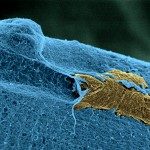Link to Pubmed [PMID] – 25447804
Intensive Care Med 2015 Feb;41(2):248-56
PURPOSE: To describe the current practices of volume expansion in French intensive care units (ICU).
METHODS: In 19 ICUs, we prospectively observed the prescription and monitoring practices of volume expansion in consecutive adult patients with shock [sustained hypotension and/or need of vasopressor therapy, associated with at least tachycardia and/or sign (s) of hypoperfusion]. Patients were included at the time of prescription of the first fluid bolus (FB). Thereafter, all the FBs administered during the 96 h following shock onset were surveyed. An FB was defined as an intravenous bolus of at least 100 ml of a blood volume expander intended to rapidly improve the patient’s circulatory condition.
RESULTS: We included 777 patients [age: 63 ± 15 years; female gender: 274 (35 %); simplified acute physiology score II: 55.9 ± 20.6; ICU length of stay: 6 days (interquartile range (IQR) 3-13); ICU mortality: 32.8 %] and surveyed 2,694 FBs. At enrolment mean arterial pressure was 63 mmHg (IQR 55-71). The most frequent triggers of FB were hypotension, low urine output, tachycardia, skin mottling and hyperlactataemia. Amount of fluid given at each FB was highly variable between centres. Crystalloids were used in 91 % (2,394/2,635) and synthetic colloids in 3.3 % (87/2,635) of FBs. Overall, clinicians used any kind of haemodynamic assessment (central venous pressure measurement, predictive indices of fluid responsiveness, echocardiography, cardiac output monitoring or a combination of these) in 23.6 % (635/2,694) of all FBs surveyed, with an important between-centre heterogeneity.
CONCLUSIONS: High between-centre variability characterised all the aspects of FB prescription and monitoring, but overall haemodynamic exploration to help guide and monitor FB was infrequent.
